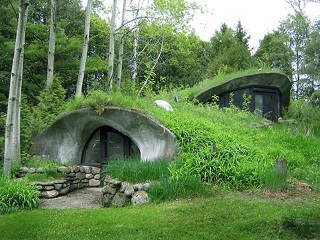From Guest Blogger Diana Smith: How to Green Up Your Insulation

Recycled wood products
Recycled wood products are an excellent form of insulation – the fact that it’s wood means quality insulation and the fact that it is recycled means eco-friendliness.
Cork
This material is made from the bark of certain Oak tree species and it is a fully-sustainable product. Mostly made out of recycled wine corks, cork brags fantastic temperature modulation capacities.
Cellulose
This is the most widespread organic compound on Earth! Produced from recycled paper, cellulose has the highest recycled content out of all products on the market and is effective in reducing greenhouse gas emissions, owing to the fact that it prevents the paper from ending up in landfills.
Newspaper
This is by far the simplest green wood product insulation. Wrap it around bare water pipes in your basement and newspaper will do wonders in terms of preserving the standing water temperature inside the pipes. This solution is fantastic for wintertime.
Fiber products
Fiber is yet another material that’s better off repurposed than ending up in landfills.
Fiberglass
The problem with fiberglass lies in airborne fibers, but slip them inside a quality bag and the fibers will remain at bay until you cut them.
Sheep wool
Completely eco-friendly, this material is gathered from living creatures and is used for moth- and mildew-proofing.
Mineral wool
This green insulation material is so awesome owing to its fire- and pest-resistant properties. besides being waterproof, it is also an excellent sound absorbent.
Recycled denim
Post-industrial denim is perfectly safe and squeezable to boot, making it an excellent green insulation choice. This material usually consists of around 90% of recycled denim and an addition of a variety of other cotton fibers.
Foam
Foam is among the most frequently used insulation materials, but it isn’t really known for its eco-friendliness. You’ll be happy to learn that this isn’t necessarily true. While some types of foam are far from sustainable, some are extremely environmentally beneficial.
Polyicynene/polyurethane
The making of both polyicynene and polyurethane does include an oil-derived chemical called polyisocyanate, but, contrary to popular belief, this doesn’t make the entire process entirely bad. How come? Well, these products save a lot of energy very efficiently, plus the blowing agents used here (water and a non-ozone-depleting chemical for each of the two, respectively) are completely environmentally safe.
Rigid polystyrene
These sheets of cut-to-fit Styrofoam have the best R-value out of all foam insulation products and are affordable and quite physically resistant. So, what’s the catch? Well, CFC’s and other hazardous chemical components are used in the production of this material, making its “greenness” questionable.
Getting rid of asbestos
Not every part of green insulation is based on using eco-friendly materials; when it comes to environmental consciousness, a large chunk of eco-friendly insulation solutions lies in removing those harmful for the environment. No matter how convenient and efficient your home insulation is, if it’s old, the chances are that you have a potential asbestos problem. Bear in mind that the different types of insulation may require different approaches, so referring to experts in asbestos removal from Brisbane might be the best way to go. Under no circumstances should you go at this on your own, as asbestos is a huge health hazard.
Making sure that you go green with your insulation materials is only one part of the job. Some compounds are huge pollutants and may even turn out to be harmful to your health, which means that re-insulating your home isn’t only a thing of saving money and going green, but also a matter of health.
